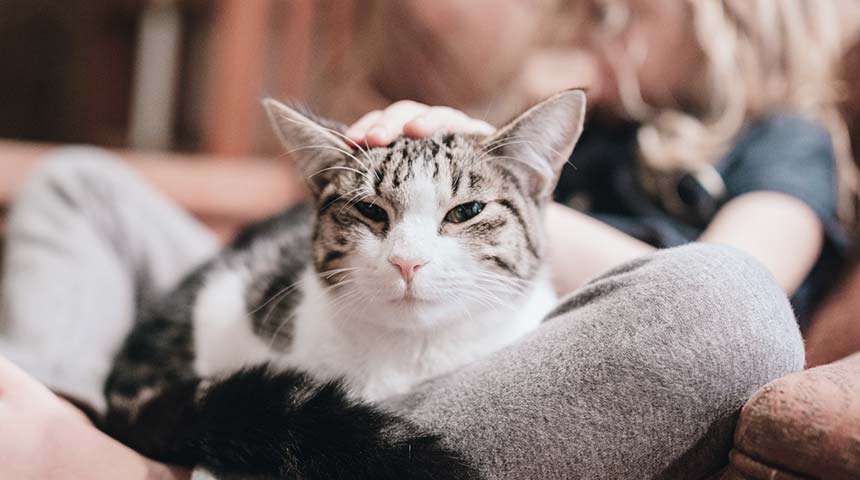
Thinking about having your cat declawed? Other solutions are available!
Important: Onychectomies (declawing) are no longer performed in our hospitals.
Sharpening his claws is normal behaviour for your cat, allowing him to mark his territory with scent and visual signals, to stretch, and keep his claws clean and sharp. With a bit of training, cats can be taught to minimize clawing in unwanted places.
Except in a few very specific cases, declawing is rarely recommended. Besides causing pain to the cat, this surgery presents risks of complications that must not be overlooked. In addition, some cats may develop behaviour problems (do their business outside the litter box, bite more easily) or experience persistent, long-term discomfort.
Declawing – an Illegal Procedure in Many Countries
Although still practiced in Canada, declawing has been banned in about forty countries, notably large parts of Europe, Australia, New Zealand, Japan, and Brazil. The Canadian Veterinary Medical Association (CVMA) and the American Association of Feline Practitioners (AAFP) have spoken up against the declawing of domestic cats.
Child Safety
By teaching your children to recognize and respect a cat’s body language, you significantly reduce the risk of injury. A cat that can no longer defend herself by scratching often resorts to her only means of defence left: biting. Note that a scratch is generally less serious than a bite.
A cat that whips her tail, flattens her ears, growls, or hisses (spits) wants to be left alone. Setting aside areas for your cat that are off-limits to children offers your pet a place to go when she doesn’t want to be bothered.
The Scratching Post
Provide your cat with a suitable support for sharpening her claws. Whether it’s a scratching post, a cardboard box or a log, for example, it must be sturdy and high enough to allow the cat to stretch fully. Cats are partial to scratching post coverings such as wood, sisal rope, carpeting or rough fabrics. Install the post close to where your cat is resting or at the entrance to a room where she often stays (e.g., the living room, near an armchair). Reward her when she uses the scratching post.
Positive reinforcement is more effective than punishment. You can use catnip, toys, or treats to reward your pet. You can also stop her from scratching on particular surfaces by covering them with double-sided tape, aluminum foil or plastic wrap, which will make them unpleasant to your cat.
Claw Trimming
Claws on all 4 paws should be trimmed regularly with a claw clipper. Get your cat used to this procedure while she’s still a kitten. Don’t forget the nail of the first claw (the equivalent of our thumb), which wears down less quickly than the others.
Nail Caps
Nail caps can be used as needed. This option involves covering each claw nail with a small plastic envelope. Easy to apply, they generally remain in place for 4 to 6 weeks. You can put them on the cat yourself or ask your veterinarian to do it for a small fee.
Don’t hesitate to ask our staff about possible alternatives to declawing!
Consult our Useful links page.

